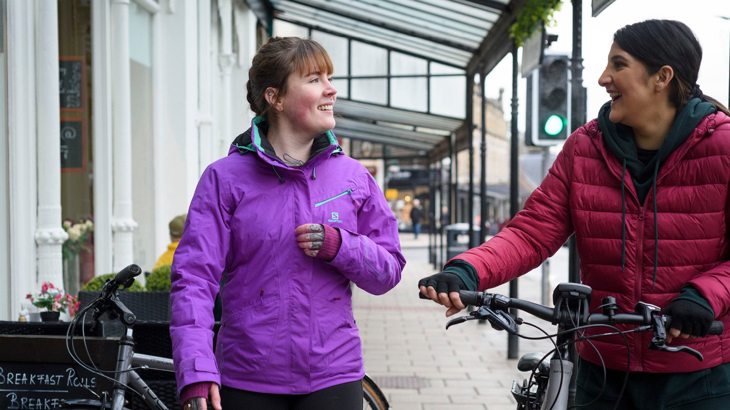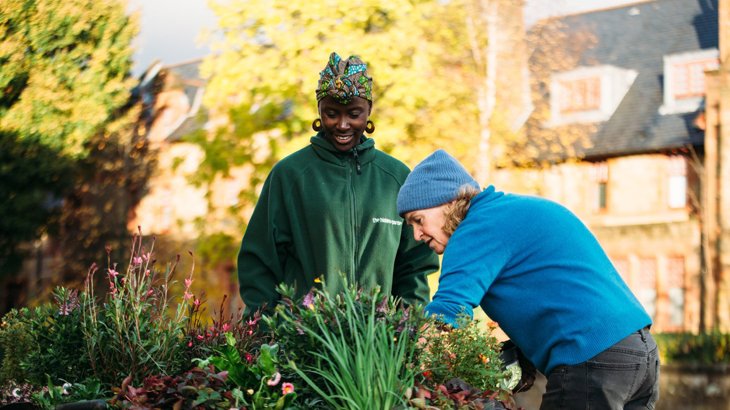80% of women of all ages have experienced sexual harassment in public spaces in the UK, according to a recent study by UN Women UK. Our Inclusive Design Manager, Tierney Lovell looks at how we need to reshape our towns and cities to help more women feel safe and more comfortable outdoors.

"Aside from the anger at my attackers, I felt ignored by the city, its design, and by those who had chosen to design it that way."
From being taught at school to hold keys between our fingers, to "text me when you’re home safe”, the fear of assault shapes many women’s behaviours and travel patterns.
Sarah Everard’s tragic murder has shone a light on the prevalence of these adapted behaviours. And the sad reality of male violence.
Safer public spaces are better for everyone
A recent study from UN Women UK has found that 80% of women of all ages (97% of women 18-24) have experienced sexual harassment in public spaces in the UK.
Much of this harassment goes unreported or uncharged.
We also know that male violence disproportionately affects trans women, women of colour and disabled women, as well as LGBTQ+ communities, disabled people and people of colour more generally.
Safety in public spaces clearly affects some people more than others, but safer public spaces are undoubtedly better for everyone.
My story is similar to many other women
Many women in particular have a story to tell.
For me, this fear became particularly real when I was in my early 20s.
I was attacked by two men in a public space - grabbed, pushed over, kicked and mugged.
I remember clearly how it took place.
Walking through an urban space that wasn’t overlooked by buildings, and with no one else around.
It was broad daylight in one of those ‘in-between’ parts of a city with no street life.
Afterwards, I remember picking myself up and running towards a row of buildings to find someone to ask for help.
Feeling ignored by the way a city is designed
My vivid memory is as much about the space as about what happened.
Aside from the anger at my attackers, I started to question how the environment had supported the situation.
Would it have happened in a street filled with people?
Would it have happened with lots of windows overlooking?
I felt ignored by the city, its design, and by those who had chosen to design it that way.

"While inclusive design alone cannot remove the structural issues that cause male violence, it can help to provide environments that are less tolerant of violent crime."
Creating spaces that are less tolerant of violent crime
Last week many men asked women:
"How can I make you feel more comfortable when you are alone in a public space?"
All those involved in transport and the built environment should also be asking:
"How can my project make you feel more comfortable when you’re alone in a public space?”
While inclusive design alone cannot remove the structural issues that cause male violence, it can help to provide environments that are less tolerant of violent crime.
Spaces that are more comfortable for everyone to use.
Raising the voices of women
This is best achieved through having more women and diverse voices at the heart of decision-making.
But we can all be allies if we fully recognise the impact of our work on public safety and the perception of safety.
And how the spaces around us and the behaviours that these spaces encourage also have an impact on how we perceive our security.
We need to design public spaces that are vibrant and lively
It’s not just about providing lighting (although that is important).
It’s also about encouraging activity in our public spaces, through good urban design and targeted behaviour change.
As an organisation, we acknowledge that parts of the National Cycle Network can be uncomfortable for many, particularly at night. And we're exploring ways to improve this.
Sustrans has an important role to play.
We need to work to design more lively public spaces and ensure urban walking and cycling routes are busy, well-overlooked and inviting to everyone at all times of the day.
Only then can we really help to provide more security to women and more welcoming and enjoyable spaces for everyone.





